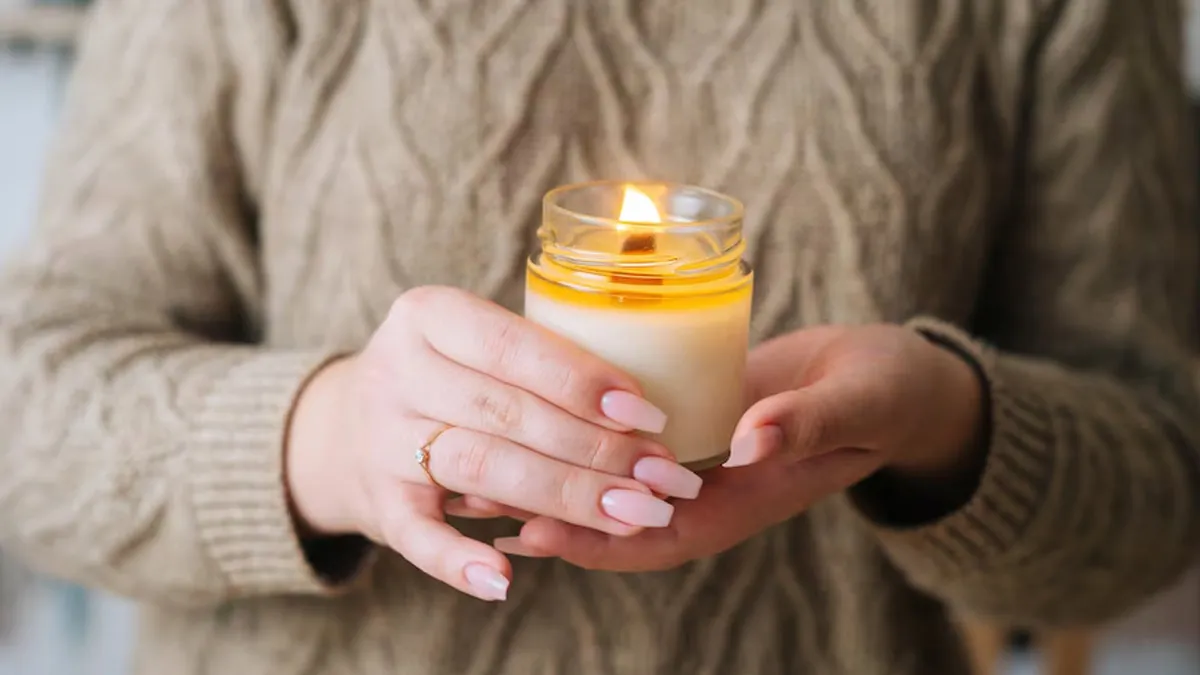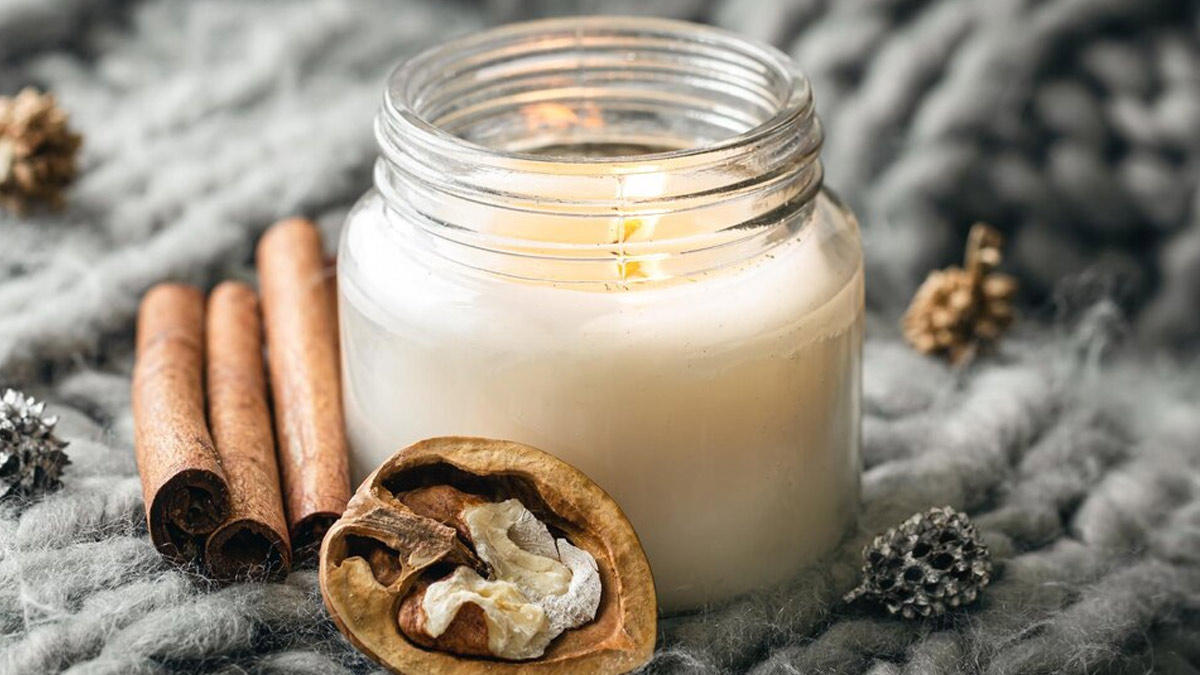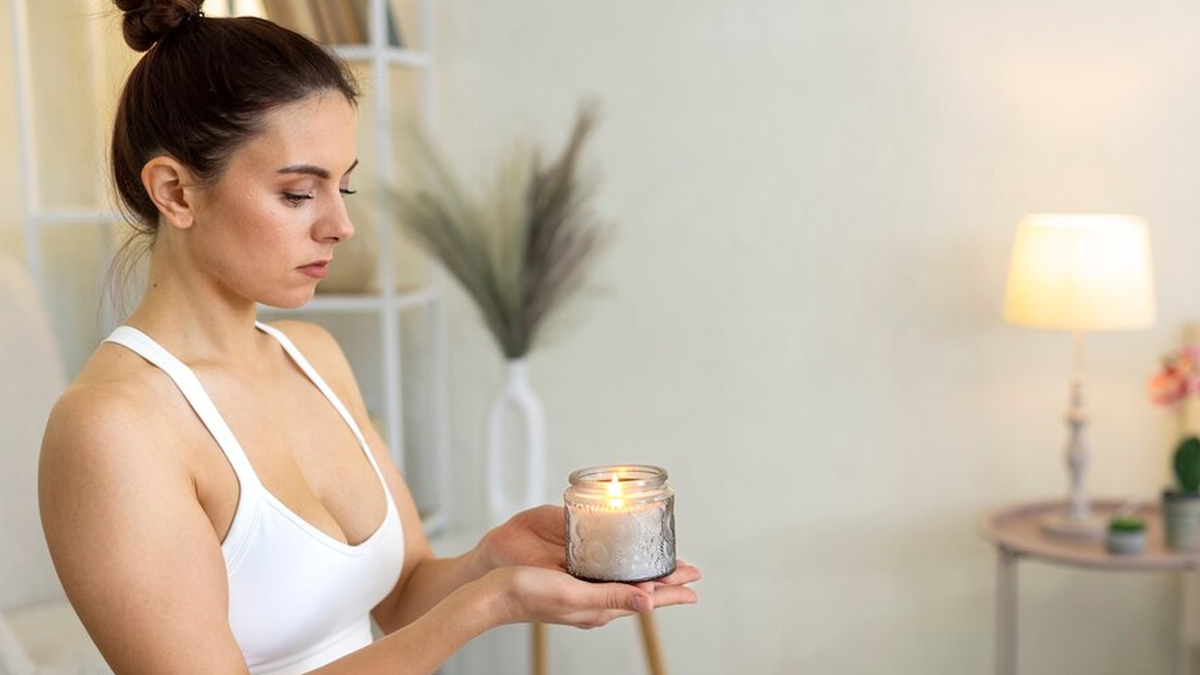
Scented candles have long been a staple in our homes, promising relaxation, cozy ambiance, and a touch of luxury. But beneath the alluring aromas, a cloud of concern has been gathering. Are these fragrant additions to our living spaces actually good for us, or could they be silently impacting our health? We delved deep into the science and spoke with leading environmental health expert, Dr Shrey Srivastav, Senior Consultant and General Physician at Sharda Hospital, Noida, to uncover the truth behind scented candles.
Table of Content:-
For centuries, candles were a simple source of light. The introduction of fragrance, however, transformed them into a multi-sensory experience. Today, a vast array of scented candles floods the market, promising everything from stress relief to enhanced focus. But Dr Srivastav cautions that this sensory appeal might come at a cost.
"The primary concern with many scented candles lies in their composition and the byproducts they release when burned," explains Dr Srivastav. "We need to consider both the wax and the fragrance components."
Waxing Poetic, But What's the Reality?
Traditional paraffin wax, a byproduct of petroleum refining, is a common ingredient in many commercially produced candles. When burned, paraffin can release volatile organic compounds (VOCs) like benzene and toluene, known carcinogens. Studies have shown that these emissions, especially in poorly ventilated spaces, can contribute to indoor air pollution.

Also Read: Busting Nutrition Myths: Dietician Shares What Your Body Needs This Summer
"Think of it like burning diesel fuel on a small scale," Dr Srivastav elaborates. "While the concentrations might be low in a single, well-ventilated use, repeated exposure over time can be a concern, particularly for individuals with respiratory sensitivities like asthma or allergies."
However, the candle industry has responded to these concerns with alternative waxes like soy, beeswax, and coconut wax. These natural waxes are often touted as cleaner-burning options, producing less soot and fewer harmful emissions.
"While natural waxes are generally a better choice than paraffin, it's crucial to look for 100% natural wax," advises Dr Srivastav. "Some candles may contain blends with paraffin, diluting the benefits."
The Fragrance Factor: A Hidden Cocktail?
The allure of scented candles lies in their ability to fill a room with captivating aromas. But the "fragrance" listed on the label can be a complex mixture of natural and synthetic chemicals. These synthetic fragrances can release a variety of VOCs, including formaldehyde, acetaldehyde, and phthalates.
"Phthalates are a particular concern," Dr Srivastav points out. "They are often used to help the scent linger and have been linked to endocrine disruption, reproductive issues, and developmental problems in some studies. While the levels released by candles might be low, cumulative exposure from various sources is something to be mindful of."

Furthermore, the burning process itself can transform the fragrance compounds, potentially creating new and potentially harmful substances. The soot produced by burning, regardless of the wax type, can also carry these particles deep into the lungs.
So, Are Scented Candles All Bad? Not Necessarily.
Dr Srivastav emphasises that the impact of scented candles on health depends on several factors, including the type of wax, the quality and composition of the fragrance, the frequency and duration of use, and the ventilation of the space.
"It's not about completely demonising scented candles," she clarifies. "It's about making informed choices and using them responsibly."
Expert Tips for Burning Brighter and Healthier
Dr Srivastav offers the following practical advice for those who enjoy the ambience of scented candles:
Opt for Natural Waxes: Choose candles made from 100% beeswax, soy wax, or coconut wax. Look for clear labelling that specifies the type of wax.
Be Wary of Synthetic Fragrances: Consider unscented candles or those scented with pure essential oils. Be cautious of vague "fragrance oil" listings, as these often contain synthetic compounds.
Prioritise Ventilation: Always burn candles in a well-ventilated room to allow for the dispersal of any potential emissions. Open windows or use an air purifier.
Keep Wicks Trimmed: Trim the wick to about a quarter of an inch before each use to prevent excessive soot production and an uneven burn.
Limit Burning Time: Avoid burning candles for extended periods. An hour or two is often sufficient to enjoy the scent and ambience.
Consider Alternatives: Explore other ways to create a pleasant atmosphere, such as diffusing essential oils (using a diffuser designed for this purpose), simmering herbs and spices on the stovetop, or using natural air fresheners.
Bottomline
While scented candles can enhance our living spaces and evoke positive emotions, it's crucial to be aware of their potential impact on our health. By choosing candles made from natural waxes and scented with pure essential oils, ensuring proper ventilation, and practising mindful usage, we can minimise potential risks and continue to enjoy the gentle glow and subtle aromas more healthily. The key, as Dr Srivastav wisely concludes, lies in "conscious consumption and prioritising our well-being alongside our sensory pleasures."
Also watch this video
How we keep this article up to date:
We work with experts and keep a close eye on the latest in health and wellness. Whenever there is a new research or helpful information, we update our articles with accurate and useful advice.
Current Version